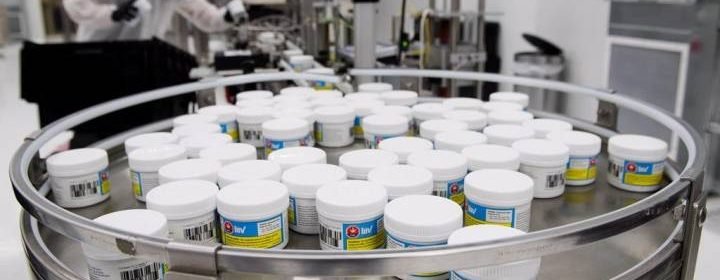Cannabis supply slowly improving but not enough to allow more licences: AGLC

The Alberta regulator in charge of the legal marijuana market says supply is improving, but not enough to start issuing new cannabis licences.
Cannabis was legalized across Canada on Oct. 17, 2018. On Nov. 21, Alberta Gaming Liquor and Cannabis suspended new applications and said it wouldn’t issue any additional cannabis retail licences until further notice.
AGLC said the temporary suspension was required because it had only received 20 per cent of the product it ordered and expected from licensed producers.
On Thursday, the provincial regulator told Global News there are no notable updates to the supply shortage. While it’s slowly getting better, AGLC said it’s not enough to sustain demand and therefore the suspension on new licences remains in place.
“The supply challenges have not entirely been overcome, but largely overcome,” said Allan Rewak, the executive director of the Cannabis Council of Canada, which represents licensed producers.
He confirms there were production challenges navigating the new, complex and highly-regulated industry.
“We’ve faced issues from the logistics and the supply chain elements of production that did create some shortages.
“But I’m pleased to say cannabis remains available, we still have cannabis stockpiled, and we’re working very hard to get that in the hands of our privileged distributors, and through those privileged distributors, retail outlets all across Alberta.”
AGLC has signed contracts with 15 federally-licensed cannabis producers. The AGLC website lists 65 licensed cannabis retailers across Alberta — 10 of which are in Edmonton.
As of 11:30 a.m. Thursday, albertacannabis.org had 65 of its 139 products listed as available — as opposed to out of stock. The products available included dried flowers, capsules, pre-rolled joints, oils and seeds.
“Due to the high degree of regulation, things such as the application of excise stamps proved to be a little problematic during the initial stages of legalization,” Rewak said. “Remember, these were all new aspects of the production regime under C-45, which is different from the previous medical system.”
He believes Canadians should expect “a remarkably improved system” within six months to a year.
“It is impossible to say with absolute granular certainty when the supply issue will be resolved,” Rewak said. “I think it’s getting better each day. Each week and each month, we’ll see continual improvement as we bring more production online and we get more product in the door.
“What we’ve seen through legalization is an incredible demand for legal cannabis from Canadians. That’s a really positive sign for both the sector and the government.”
Rewak added it’s also a good sign for the labour market. By the end of 2018, he estimates 10,500 Canadians were directly employed in the cannabis sector.
“That will grow exponentially,” he said. “There are some estimates that in six to seven years, we’ll see up to 150,000 directly employed in this industry, from processing to retail to production.
“This is one of the most innovative and exciting sectors in the Canadian economy. We’ll create thousands of jobs on a monthly basis.
As the industry evolves, it will include new product categories as well, like vape pens, beverages and edibles, he said.
“There are, I believe, 138 cultivation facilities across the country,” Rewak said. “Six new licences were granted last Friday, but those were for processing facilities that will take and refine cannabis into concentrates, edibles and new product categories.”
Sign up for our Cannabis IQ newsletter
© 2019 Global News, a division of Corus Entertainment Inc.
Source: Read Full Article

